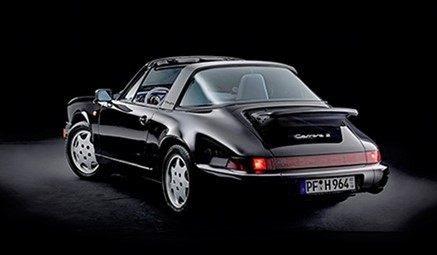
Battery coding
Batteries have a code that indicates the size and type of battery. This code differs depending on the specification of the battery construction. There are 3 different specifications in the world that regulate the size, power and performance of batteries and they are the European (EN), the Japanese (JIS) and the American (BCI). Each of the above specifications has a different coding and is based on different standards for calculating their performance.
European standard batteries
European standard batteries use 2 types of codes. One comes from the older coding according to the German DIN standard and the other is the newer coding according to the European Union (EN) standard.
DIN coding
It is always five digits and consists of two parts:
- A three-digit number that indicates the capacity of the battery based on the number 500 (for 12V batteries). Eg 560 means batteries with a capacity of 60 Ampere, while 600 means batteries with a capacity of 100 Ampere.
- A two-digit number that is characteristic of the polarity and capacity of the battery and may vary by manufacturer. E.g. 59 is used for the right position of the positive terminal.
- Overall the battery code is as follows: 555 59 which indicates that the battery is 12V, has a capacity of 55AH and usually has the position of the positive terminal on the right.
- The WINNER PREMIUM HP, PREMIUM and ADVANCE series use this code.
EN coding
It is always nine digits and consists of three parts:
- A three-digit number that indicates the capacity of the battery based on the number 500 (for 12V batteries). Eg 560 means batteries with a capacity of 60 Ampere, while 600 means batteries with a capacity of 100 Ampere.
- A middle three-digit number that is characteristic of the polarity and capacity of the battery and may vary by manufacturer. E.g. 059 is used for the right position of the positive terminal.
- The last three-digit number that shows the cold start performance of the battery in tens according to the European standard. For example, 054 means batteries with a performance of CCA 540 Amps cold start at -18 degrees Celsius, while 120 means batteries with a performance of CCA 1200 Amps cold start at -18 degrees Celsius.
- European standard batteries use the position of the positive pole to orient the polarity and in contrast to the batteries of the Japanese and American standard.
Batteries of Japanese specification
Japanese standard batteries use alphanumeric codes consisting of 4 parts:
- The first shows the maximum performance of the battery in tens according to the Japanese standard
- The second is the container starting from A for the smallest and continuing up to H for the largest.
- The third shows the size of the container in centimeters with rounding.
- And the fourth shows the polarity of the battery based on the position of the negative pole. The R attribute indicates the position of the negative pole on the right side, while the L attribute indicates the position of the negative pole on the left side.
- For example, the 32B19L type indicates a battery with an output of up to 320A cold start, in a size B container (one of the smallest), about 19 cm long and with the negative pole position on the right side.
American standard batteries
American-made batteries use codes consisting of a two-digit number common to the same battery pack (eg 31, 34, or 46). This type of battery always has the same dimensions and the same pole orientation.
The code is also supplemented by a three-digit number indicating the battery's performance at Power Intensity (A Ampere Cold Start) calculated according to the American standard (eg 520 means 520A cold start).
Finally the coding according to the American standard has the following format: 31-750, where 31 shows specific box dimensions and 750 the battery performance.
You can see here a complete guide to the types of American type batteries.
In both types the L (if any) indicates that the battery has a left pole orientation (see below for more details) while the R indicates a right pole orientation based on the negative pole.
If you can not find your battery type, just measure it with a meter and note all 3 dimensions.
Amperoria (Ah)
Amperers are a unit of measurement of battery capacity. This means that this battery can provide (if full) the number of amperes it lists over a period of time depending on the usage and type of battery. The more amperes, the greater the capacity of the battery, so the longer the battery can hold without charging.
Always buy a battery of at least the same Amperion as the one originally installed by the manufacturer. You can of course put bigger if you want up to one size more. Especially if you intend to have car functions for a long time without the engine running, then it is advisable to choose a more powerful battery with more Amperea than the one installed by the manufacturer.
Battery start power (EN or CA or CCA)
The starting power of the battery is how much power the battery can give when starting the engine. Although usually many do not even know it or just do not pay due attention to it, it is an important feature of the battery.
The car needs enough power to start properly. Especially newer cars that have multiple control modules and several electronic assist systems need enough power to start. If your car is quite demanding because it has a lot of electronic systems, then you need a battery with enough amps to start.
The starting power has a correlation with the Battery life, ie usually the more Ampere hours, the higher the starting power will be. Of course, this is not always the case and has to do mainly with its construction and technology.
So for example you can have two seemingly identical batteries with the same Amperoria but with completely different starting power.
Starting power is very important. With less than recommended, you will not be able to start the car. It is good to choose one with performance higher than the recommended one or the one that already has the car on, so that you do not have a problem in case you add new systems later.
Also the performance tends to decrease over time and the battery wears out. So if a smaller battery is inserted during the replacement, you are likely to have problems starting the car after a period of use.
One thing to know and be very careful not to be misled by the listed starting performance is that there are 3 different performance values for each battery. The CCA cold start performance that shows the performance measured at -20 degrees Celsius and is the performance used by the world's leading battery companies, the other is the CA that shows the performance measured at 0 degrees Celsius and finally the HCA that shows the performance in measurement at 27 degrees Celsius.
The performance values listed on the batteries are always different and usually the CCA is 60% of the HCA and 80% of the CA.
Usually if nothing else is mentioned, it is the CCA. However, a battery can have a "barking" value of HCA (because it is always higher) and mislead you.
WINNER batteries always list their performance in CCA, always having a higher performance than the one listed, characteristic of their top quality.



